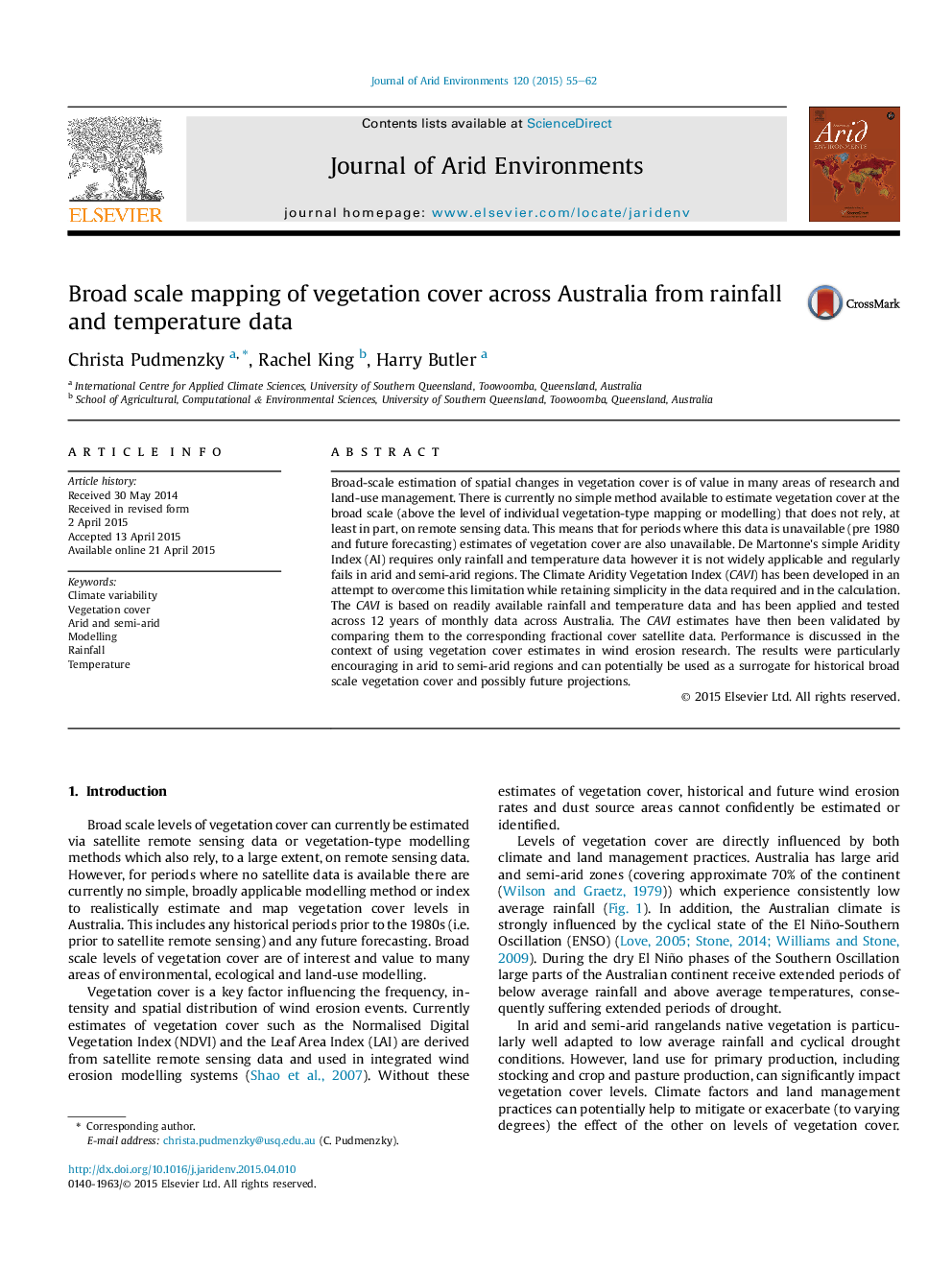| Article ID | Journal | Published Year | Pages | File Type |
|---|---|---|---|---|
| 4392822 | Journal of Arid Environments | 2015 | 8 Pages |
Abstract
Broad-scale estimation of spatial changes in vegetation cover is of value in many areas of research and land-use management. There is currently no simple method available to estimate vegetation cover at the broad scale (above the level of individual vegetation-type mapping or modelling) that does not rely, at least in part, on remote sensing data. This means that for periods where this data is unavailable (pre 1980 and future forecasting) estimates of vegetation cover are also unavailable. De Martonne's simple Aridity Index (AI) requires only rainfall and temperature data however it is not widely applicable and regularly fails in arid and semi-arid regions. The Climate Aridity Vegetation Index (CAVI) has been developed in an attempt to overcome this limitation while retaining simplicity in the data required and in the calculation. The CAVI is based on readily available rainfall and temperature data and has been applied and tested across 12 years of monthly data across Australia. The CAVI estimates have then been validated by comparing them to the corresponding fractional cover satellite data. Performance is discussed in the context of using vegetation cover estimates in wind erosion research. The results were particularly encouraging in arid to semi-arid regions and can potentially be used as a surrogate for historical broad scale vegetation cover and possibly future projections.
Related Topics
Physical Sciences and Engineering
Earth and Planetary Sciences
Earth-Surface Processes
Authors
Christa Pudmenzky, Rachel King, Harry Butler,
